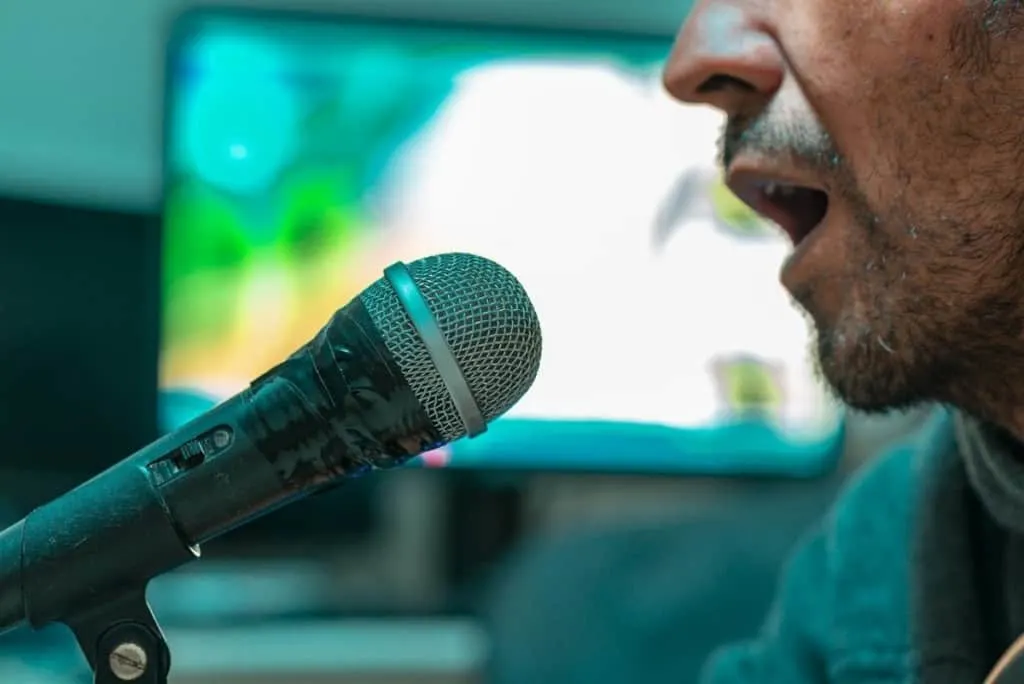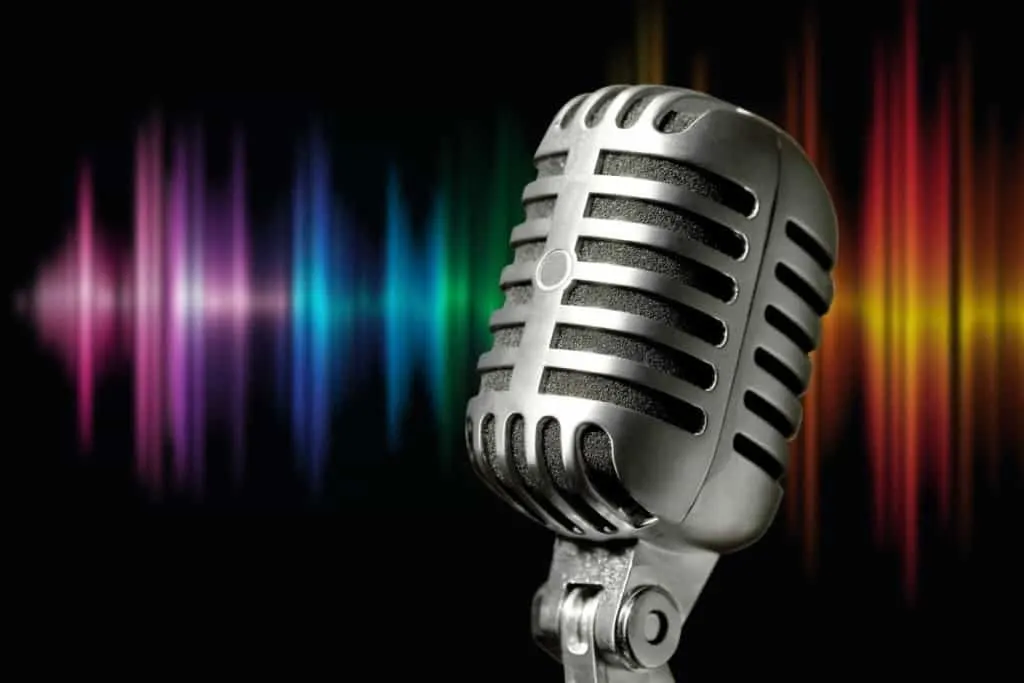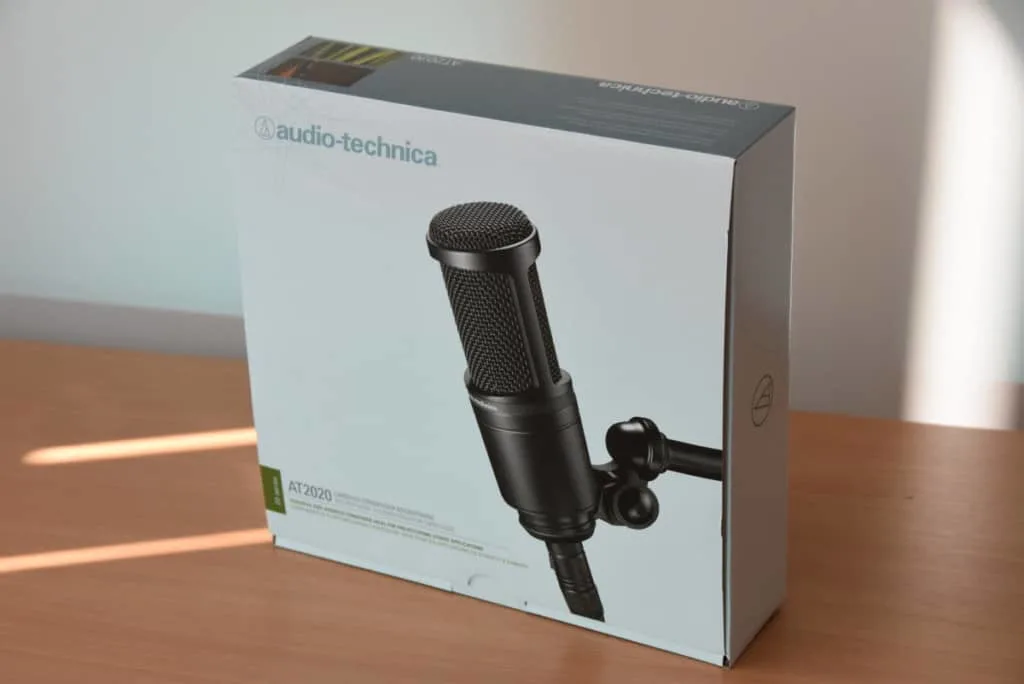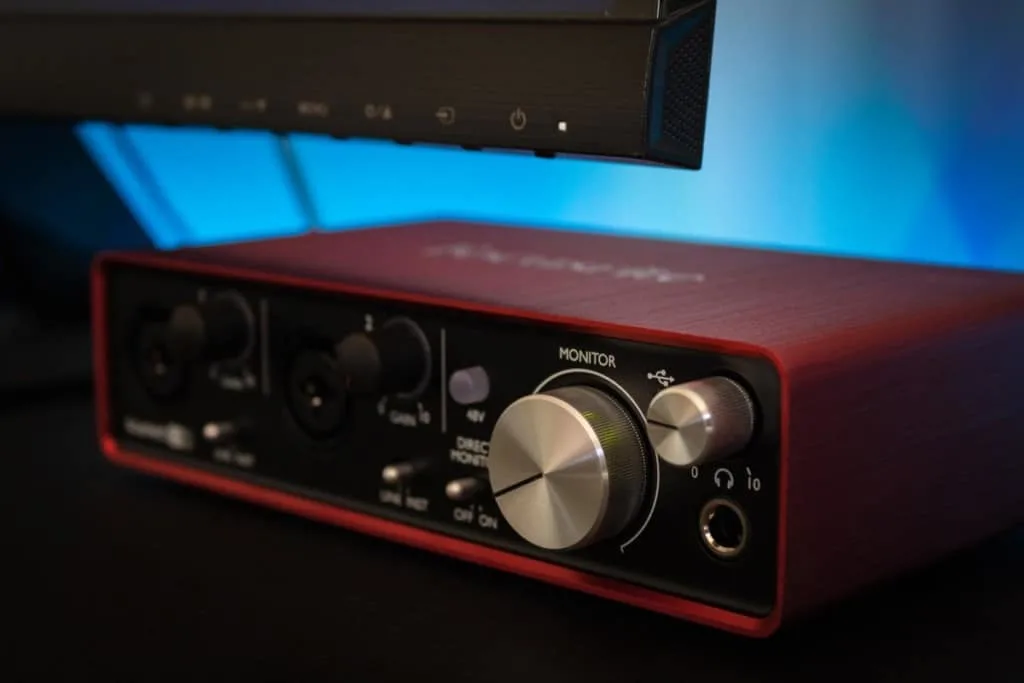It’s never been easier to record your own voice over a backing track from the comfort of your own home. Technology has come a long way in the last 20 years, Let’s take a look at just how simple recording your own voice over a song has become.
So, how do you add vocals to backing tracks or simply record your own vocals along with a song?
To record your voice over a song you need to digitalize your voice with a USB microphone or an audio interface and then have a DAW (Digital Audio Workstation) (like Audacity for example) to record it with. Audacity is completely free as well which is great!
You can download Audacity here. https://www.audacityteam.org/download/
Home recording has become simpler, easier to use, and much cheaper. This is great news for the home recording artist!
To record your voice over a song isn’t actually as difficult as you might think.
You should insert your backing track in the same DAW (Digital Audio Workstation) you’re going to be singing on and export it all as a single audio track. Sounds a little complicated? Don’t worry it’s fairly simple. Let’s take a look.
Don’t worry if you don’t quite understand exactly how to do this yet. Let me explain in a few simple steps.
Although it is very simple, there are many lessons that experience has taught me that I would like to share with you.

Is It Possible To Record Vocals Over A Karaoke Track?
The above question along with “Do you need to create karaoke tracks yourself or can you just download them from the internet?” are questions I get asked a lot.
Let’s go one at the time:
- Add vocals to backing tracks – Doing this is fairly simple, all you have to do is get a backing track, add it to the program you are using to record and sing over it (more on this later). The crucial part here is using a good pair of closed-back headphones to avoid the track leaking into the microphone you are singing into.
- Downloading karaoke tracks – Karaoke tracks are abundant on the internet; there are plenty of websites doing them. Just type on Google the name of the song and then “karaoke download”. These are mostly free as well.
Take a look at my video that accompanies this article here.
You can subscribe to the youtube channel here. It’s free!
Professional Karaoke Backing Track Resources
This is the better option.
One of my favorite resources for downloading a great quality backing track is a website called Karaoke Version. You can visit the website here https://www.karaoke-version.co.uk/
This is a great resource, as not only are the backing tracks of great quality but you can also change the key (pitch) of the music to suit your voice or instrument before downloading.
You can even customize the backing tracks at Karaoke Version, to remove instruments, reduce the volume of certain parts or simply change the mix! In short, you can have exactly what you are looking for, even changing the tempo! This, for me, makes a massive difference when wanting to record my own voice over a song.
I will discuss using Audacity software later, but here’s a great video on how to add your voice over a backing track.
What Type Of Microphone Do I Need To Record Vocals?
To record vocals, the best microphones are always condensers. So, what are condenser microphones and what is the difference with regular dynamic ones? Let’s take a look at each:
- Condenser microphones – These microphones are great to capture the low-mid and mid frequencies of your voice. They need phantom power to work (48 volts) and can generate a warmer tone that’s very common for vocals. Furthermore, your ear is used to hearing vocals through condenser microphones because they are the industry standard in recorded music. So, to add vocals to backing tracks your first choice should be a condenser microphone.
- Check out this condenser microphone on Amazon, it’s been talked about in every Facebook group I’m a member of right now and I can tell you from personal experience this is a great condenser microphone.
- Dynamic microphones – These microphones are the most common and affordable ones in the market, and you will see them on virtually every stage in the world. They don’t need any extra current to work (phantom power) but don’t have the warmth of condenser microphones. If this is the microphone you have at home or at hand, it will fulfill the task anyway, but results will not sound as good as with a condenser microphone.
- Choosing a dynamic microphone is simple. The Shure SM58 is the best-selling dynamic microphone for many decades. Every home studio should have at least one of these. Check it out here on Amazon.
Recording vocals over a song can be a hobby or something you do for a living. Depending on the quality of the equipment you have at your disposal, the result will definitely be different. My advice is to start with what you have; there will always be room for improvement.
Which Pre Amp Can I Use For Recording Vocals?
This is a question I get a lot from people who want to record vocals.
Let’s quickly clear up what a preamp actually is.
A preamp is a signal booster that can add color and a specific tone to the signal.
Usually, high-end audio equipment like big consoles have a specific preamp that gives character to the resulting audio. Another use of the preamp is to boost the signal level of the instrument (in this case your voice) so you won’t have to bring the level up afterward.
When you just increase the volume in the mix, you will also be boosting background noise, and nobody wants to hear background noise.
Now, that being said, most recording equipment, especially condenser microphones, do not need a preamp. I would say that you only want to put a good-sounding preamp when you add vocals to backing tracks and for that, you will have to spend serious money.
Good preamp brands and consoles are recording studios most expensive items along with microphones.
A good first preamp is the Behringer PP400. You can check it out here on Amazon.
So, the bottom line is that if you have a decent microphone, you do not need a preamp to record your voice over a song, however, many people find that the volume of recorded vocals is quite low without using a preamp.

Do I Need A Mixer To Record Vocals?
The second most asked question after the preamp is the mixer. Again, what is a mixer good for? It can give us certain benefits:
- Phantom power – Most mixers, regardless of size and brand, are equipped with phantom power. If you have a condenser microphone, you need phantom power.
Take a look at my article that describes exactly what phantom power is, you can read it right here.
- Preamp – The main reason people buy mixers is that they mostly have built-in preamps in each channel with EQ and gain before hitting the computer.
- Mixers have a built-in DAC – The term DAC stands for Digital Audio Converter. When you need to record vocals to a computer, you need to turn your analog voice signal into zeros and ones for your computer to process it. This can be a feature on the microphone (USB microphones) or you can use an external audio interface or a mixer with a USB output that can act as a DAC.
- Multiple inputs – Let’s say that instead of singing on your own, you are wanting to record a duet or even a choir, well, you need to plug in several microphones. With a mixer, you can connect them all at the same time and send all the information to your computer.
If it’s just you and you want to record voice over a song using a USB mic or an external DAC, there’s no need for a mixer either (most audio interfaces come with built-in phantom power capabilities).
Choosing Gear Can Be Really Hard!
Home recording requires a whole series of equipment, and it can be difficult to do the research to figure out exactly what to buy depending upon your budget.
I have written a complete guide to exactly which equipment you should get depending on your budget.
Simple Ways To Record Vocals At Home
Let’s look at three simple ways to record vocals at home.
- With a USB mic – This is the method chosen by most people. With a USB microphone, all you need is to plug it into the USB input of your computer and the microphone acts as a DAC. Some models even have a built-in headphone input for real-time monitoring. Check out the wide range of USB vocal microphones available here on Amazon.
- With an external DAC + microphone – With an external DAC (Digital Audio Converter) you can use a regular XLR microphone. These external DACs receive the name of audio interfaces and one important thing you need to bear in mind is that every input of the audio interface will translate into a track in your computer. If you use a mixer, regardless of the inputs of your mixer, you’ll have as many tracks as the inputs of your DAC.
With the computer in-built microphone – This is the final method and the one that will give you the not-so-good results when you add vocals to backing tracks. When you record voice over a song and do it with the built-in microphone you will be recording also all the noises around you at the moment. If you don’t have anything else, it is possible to do it, but not recommended.
- The Audio Technica AT2020 is a great microphone for recording vocals. Check it out here on Amazon.

Do I Need A Pop Filter For Recording Vocals?
The answer to this is absolutely yes. You need to reduce the “plosive” sounds to record vocals.
Take a look here at why you need a pop filter and which one to choose.
Is Audacity Good Enough Software For Recording Vocals?
To add vocals to backing tracks Audacity Software is perfect. It’s also completely free too!
If you have this open-source software, then open it up and learn how to use it. You can record vocals, entire albums, podcasts, or whatever you like with it and it is completely free of charge.
You can download the free Audacity software here https://www.audacityteam.org/ This software is used all over the world and does not come bundled with any other software. It’s completely safe to use which is great.
Here’s a video on how to use the free Audacity software to record your voice over a song.
How To Record Your Voice Over A Song (Simple Audacity Steps)
Let’s go through a simple set of steps to record voice over a song in Audacity: These are the steps I usually take to record my voice over a song.
1. Import your backing track – On a new project go to File > Import > Audio and select the track you want to put your voice over. This will create a new audio track for your project.
2. Record your singing voice – Connect either your USB microphone or the DAC that you will use and create a new track to record your voice. Make sure you check Transport > Transport Options > Overdub is set to “On” otherwise you will not hear the background track.
Press record and do your first take. If you want to record more than one vocal track just repeat this sequence of steps for each.
3. Save the project – This is something you need to do right after you sing. Believe me, a power failure can ruin a magical performance and you will be very annoyed. For this go to File > Save project > Save project as.
4. Export your track – Once you are done recording and leveled the volumes of both tracks just go to File > Export > Export Audio. It will ask you to choose the format; I recommend you choose WAV as this format is compatible with virtually every platform out there.
Audacity is very intuitive and you will also find a million tutorials on YouTube in case you get lost or want to work with the audio further.

Which Is The Best Setup For Recording Vocals Over A Song At Home?
We are very lucky in modern times to have some incredible products that do everything you need in home recording for an amazing price.
My choice (and most others) is the incredible Focusrite Scarlett Solo Studio 3rd Gen USB Audio Interface.
This all-in-one solution covers everything you require to produce great vocals from home.
The Focusrite Scarlett Solo Studio 3rd Gen USB Audio Interface. includes a good quality condenser microphone, with a 3-meter XLR cable, A 3rd generation USB audio interface for digitalizing your voice, and also inbuilt preamps and phantom power!
Check out the Focusrite Scarlett Solo Audio Interface here on Amazon.
Whichever microphone you wish to use you are covered!
This system also includes closed-back headphones to minimize any annoying leakage of sound from your headphones back into the microphone, this package really does include everything you need to get started recording your own vocals.
The Focusrite Scarlett Solo Studio 3rd Gen USB Audio Interface. even comes with its own recording software called Ableton. This is great software with full online tutorials to get you started. This is software you can use as well as Audacity or instead of.
I can’t begin to tell you how much money you would have had to spend 20 years ago to be able to record vocals like this in a studio, never mind at home!
Here’s a review and setup video on this all in one solution for recording your voice over a song.
Conclusion
Recording vocals is not a difficult endeavor. Adding vocals to backing tracks is even easier because you will only have to create the singing track. The process can be a lot of fun and the result could be the start of something new that can literally change your life.
To record your own voice over a song has never been easier.
Think for a second that back in the day, The Beatles recorded some of their first hits using only one microphone and playing live all the instruments in the same room because there wasn’t any other way.
Now you can do a million takes if you want!
Most importantly remember to enjoy your singing!
